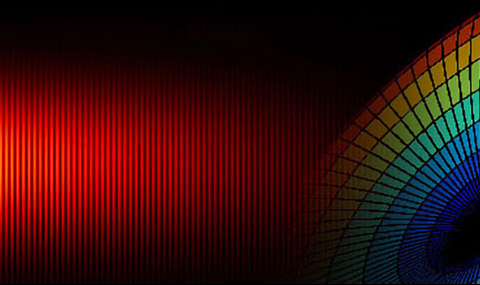Echoes in physics can be defined as spontaneous delayed responses following a series of pulsed excitations. Perhaps the most famous example is the spin-echo effect conceived by Hahn in 1950. The effect is induced by irradiating a collection of spins by two delayed magnetic-field pulses, resulting in a magnetization response appearing at twice the delay between the pulses. Over the years, echoes have been discovered in various physical systems consisting of many interacting or non-interacting particles, and in single quantum systems. Echoes form the basis for many modern methodologies ranging from nuclear magnetic resonance (NMR) spectroscopy and magnetic resonance imaging (MRI), to short-wavelength radiation generation in free-electron lasers.
We studied various echo phenomena in the rotational [1, 2] and vibrational dynamics of laser-excited molecular gases. In particular, we predicted vibrational echoes in single molecules [3]. Following the theoretical proposal, vibrational echoes in single ions of argon dimers were observed by the group of Prof. Jian Wu (State Key Laboratory of Precision Spectroscopy, East China Normal University, Shanghai, China).
We extended the studies of echoes in single quantum objects to other nonlinear oscillatory systems [4, 5]. These include a single, impulsively excited quantum Kerr-nonlinear oscillator – a paradigmatic model in various studies related to quantum information processing, and the so-called gravitational quantum bouncers. Examples of the latter include cold atoms, anti-atoms, and cold neutrons bouncing off reflective surfaces in the presence of the Earth’s gravitational field. These systems are under intense research because of precision metrology applications and the search for new fundamental physics.

Echo in a single Kerr-nonlinear oscillator. Top row: Snapshots of the classical phase-space distribution. Bottom row: Corresponding Husimi Q distribution. The initial state is a coherent state. The echo-inducing kick is applied at t = τ = 0.50. The snapshot at t = 2τ = 1.0 shows the synchronization of bunches in the classical phase-space, producing the classical echo. A similar synchronization phenomenon is seen in the Q distribution at the same moment.
- G. Karras, E. Hertz, F. Billard, B. Lavorel, J.-M. Hartmann, O. Faucher, E. Gershnabel, Y. Prior, and I. Sh. Averbukh, “Orientation and Alignment Echoes”, Phys. Rev. Lett. 114, 153601 (2015)
-
K. Lin, P. Lu, J. Ma, X. Gong, Q. Song, Q. Ji, W. Zhang, H. Zeng, J. Wu, G. Karras, G. Siour, J.-M. Hartmann, O. Faucher, E. Gershnabel, Y. Prior, and I. Sh. Averbukh, “Echoes in Space and Time”,
Phys. Rev. X 6, 041056 (2016) -
J. Qiang, I. Tutunnikov, P. Lu, K. Lin, W. Zhang, F. Sun, Y. Silberberg, Y. Prior, I. Sh. Averbukh, and J. Wu, “Echo in a Single Vibrationally Excited Molecule”, Nat. Phys. 16, 328–333 (2020)
-
I. Tutunnikov, K. V. Rajitha, and I. Sh. Averbukh, “Echoes in a single quantum Kerr-nonlinear oscillator”, Phys. Rev. A 103, 013717 (2021)
-
I. Tutunnikov, K. V. Rajitha, A. Yu. Voronin, V. V. Nesvizhevsky, and I. Sh. Averbukh, “Impulsively Excited Gravitational Quantum States: Echoes and Time-Resolved Spectroscopy”,
Phys. Rev. Lett. 126, 170403 (2021)


